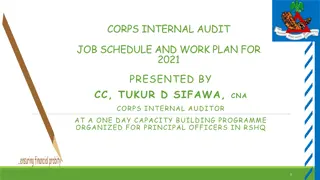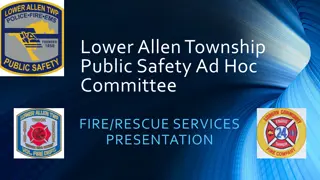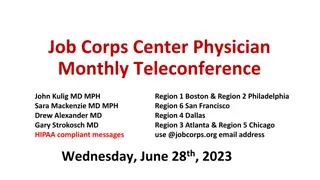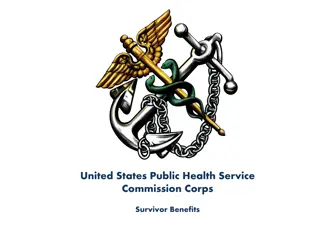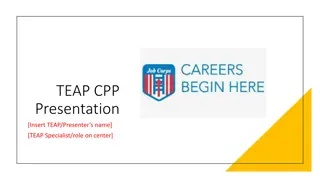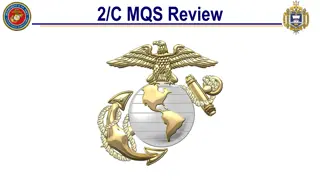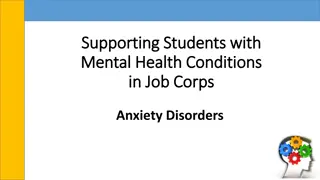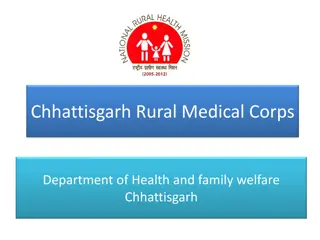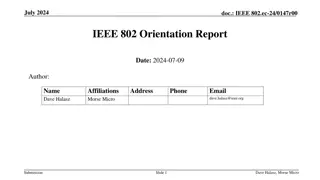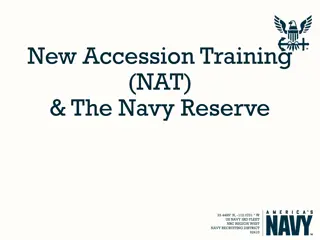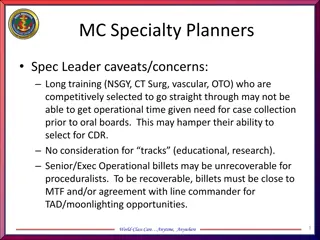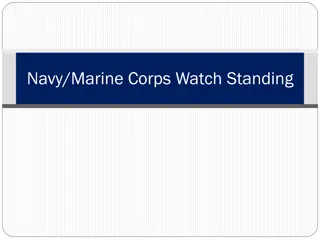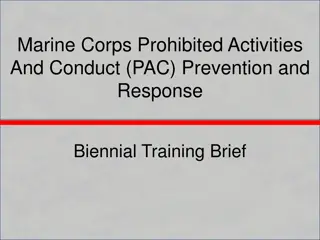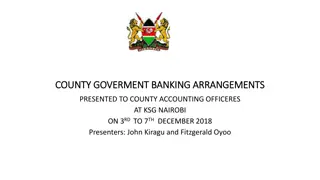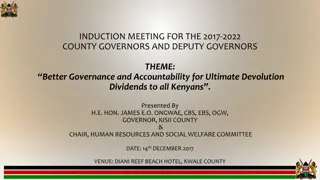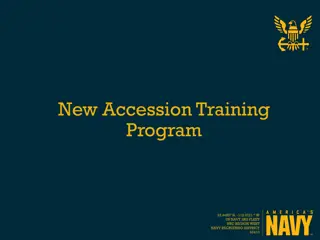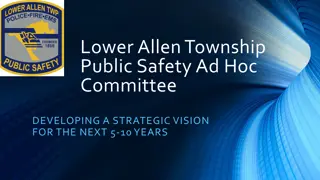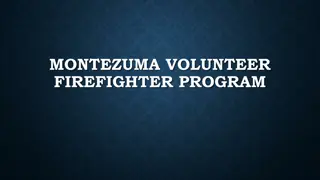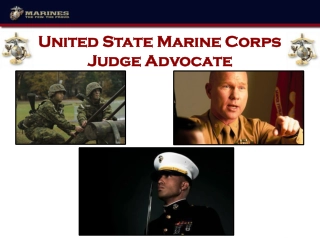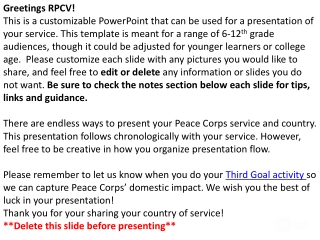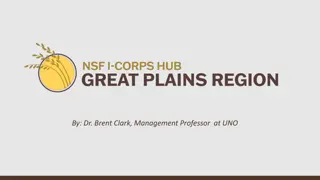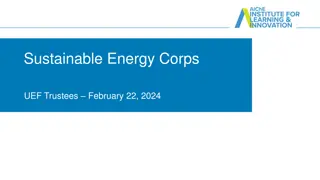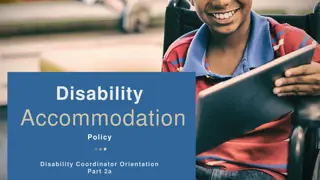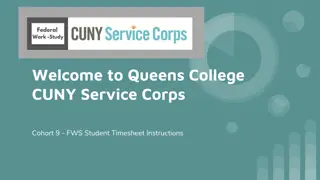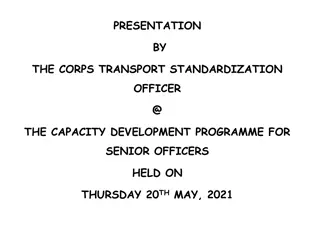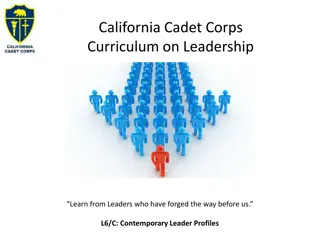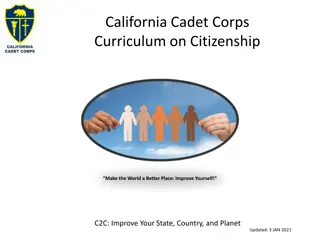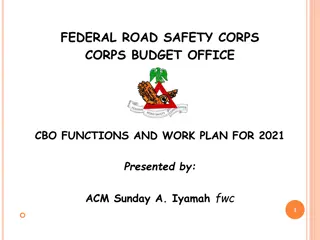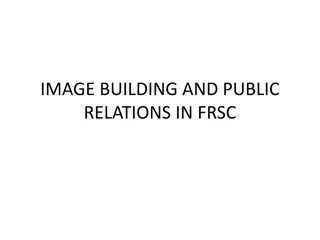Allen County Medical Reserve Corps Orientation Overview
Explore the purpose, history, and management structure of the Allen County Medical Reserve Corps (MRC) through this orientation. Learn about volunteer activation procedures, potential roles, and leadership opportunities. Understand the goal of the MRC in disaster response and public health planning. Discover the responsibilities of MRC volunteers in emergency response and their partnerships with various agencies.
Download Presentation

Please find below an Image/Link to download the presentation.
The content on the website is provided AS IS for your information and personal use only. It may not be sold, licensed, or shared on other websites without obtaining consent from the author. Download presentation by click this link. If you encounter any issues during the download, it is possible that the publisher has removed the file from their server.
E N D
Presentation Transcript
Allen County Medical Reserve Corps Orientation
April 2020 Update While this orientation was developed before the COVID-19 pandemic during non-emergency times, this orientation will give you a general overview of the purpose, history and management structure of the Medical Reserve Corps.
Objectives 1. Describe the purpose of the Medical Reserve Corps (MRC) 2. List potential reasons to activate you as an emergency volunteer 3. Steps to prepare for a potential emergency
Objectives 4. Demonstrate activation procedures 5. Describe possible roles 6. Describe the management structure used 7. Describe volunteer leadership opportunities through the Allen County MRC
Brief History of the Allen County MRC 2002 Presidential Address - created the national MRC Out of the Office of the Surgeon General 2006 Allen County MRC started
Goal of the Allen County MRC Strengthen our capacity to respond to natural or manmade disasters. Provide guidance in comprehensive disaster planning with public health focus. Develop functional capacity for planning, activities, and workforce readiness related to disaster response.
A corps of trained and credentialed volunteers
For MRC Volunteers: Role of Public Health in Emergency Response 1. Minimization of injury and suffering, promote community preparedness 2. Disease investigation and surveillance 3. Mobilize partnerships to identify and solve health problems before, during and after a disaster
Response Partners Allen County Emergency Management Agency Local Health Departments Red Cross of West Central Ohio Ohio Department of Health Police and Fire Departments Hospitals
Who are the volunteers? Physicians, Nurses, Physician Assistants, Nurse Practitioners Mental Health Professionals X-Ray Techs, Respiratory Therapists, Lab Techs Pharmacists Health Educators and Teachers Database Managers & Administrators Support, Caregivers, Clerical Bilingual Medical Professionals Anyone who wants to help!
What It Means To Be A Response Level Volunteer Support needs during an emergency
Roles: Volunteer assignments are made according to skill Clinicians should perform medical roles Non-clinicians/non medical people should assist with important support functions
What is means to be a Leadership Level Volunteer No weekly time commitment Involves additional trainings, exercises, and 4 (or more) hours of volunteer time per year Opportunities for leadership roles in a disaster
What to do as a new volunteer: As a new volunteer in the Allen County MRC you will be required to sign up in the Ohio Responds Registry and take the initial Ohio MRC orientation. Once you have taken your orientation you are eligible to get your ID badge.
Liability Protection in Ohio Revised Code 3701.04 (B) and 5502.281 (C): Provides liability protection to registered Ohio Medical Reserve Corps and Citizen Corps volunteers during local, state or federally declared emergencies, disasters, drills, exercises and trainings Exempts a registered volunteer's personal information in the Ohio Responds Registry from public disclosure.
Where Would the Response Efforts Likely Take Place? Long term Care Facilities Alternate Care Centers Shelters Outside Community/Civic Centers
Activation Procedures Explain how you will know if you are or are not being activated List the Five Phases of Activation Define just-in-time training and describe how it should be used
Allen County MRC Activation Procedures How You Could Be Contacted Phase 1: Alert Phase 2: Activate Phase 3: Operations Phase 4: Deactivation Phase 5: Debrief
Phase 1: Alert Notification Volunteers are briefed and told the likelihood of activation Ohio Responds Volunteer Registry Email, Telephone Alerts can be sent via email and phone This is essentially stand by
Phase 2: Activation Keep your contact information up to date When you are activated, the system will call, or email you and request that you indicate your ability to assist in the event
Possible Roles for Volunteers During Activation What is expected of volunteers The types of roles volunteers may be assigned. How this role will be assigned to you.
What Is Expected Of Volunteers During Activation? Ensure your family is taken care of Work safely and collaboratively Follow leadership of your supervisor Perform assigned function Maintain patient confidentiality HIPAA Follow safety measures to protect yourself social distancing, frequently wash surfaces, and not volunteering if you are ill.
Potential Roles Volunteer assignments are made according to skill Clinicians should perform clinical roles Non-clinicians should assist in other important functions Please be flexible!
Potential Roles Clinician roles: Triage of patients Medical interviewing Assisting Response Personnel First Aid, Education
Potential Roles During Activation Non-clinician roles: Assist with clinic or POD operations Patient registration Education Computer systems management
Phase 3: Operations The operations phase is the phase of the process where the actual volunteer service takes place. The length of your shift will be determined by the MRC Coordinator You will be processed through a Volunteer Reception Center Security will be provided Bring your MRC badge to the site along with other ID Wear comfortable clothes and shoes Bring any needed medication with you to the site, but try to keep personal belongings to a minimum Food and water will likely be provided
What to Do When You Receive the Call to Volunteer Evaluate your ability to respond Consider modes of transportation Activate your family emergency plan Report at the time and place specified
Operations Security will be provided Volunteers for Allen County MRC may not bring weapons to any response effort No guns, knives, or other implements intended to harm another individual will be allowed on the premises
Just-In-Time Training: a short training on the day of the response Ensures specific procedures are fresh in your mind Takes place at centralized location or at the site Provides background information you need to safely participate in a response
Phase 4: Deactivation This phase takes place when your volunteer services are no longer needed. During a disaster, if your availability permits you may be asked to serve for more than one shift. Deactivation occurs after you have served your last shift.
Phase 5: Debrief This phase occurs after the disaster is over Gathers feedback from all volunteers who respond to the event Please let us know at this time if you have any needs that have not been met May take the form of an interview, a survey, or a focus group session, and will assist in improving the future success of the MRC program/Volunteer Reception Center
Management Structure During Allen County MRC Activation Define the terms Incident Command System (ICS) Identify how you will know whom to report to within ICS Name the response partners of the MRC
How Emergencies Are Managed Emergencies and large events are managed using the Incident Command System (ICS)
ICS Roles The incident command system is lead by several key positions These are not roles that volunteers should be tasked with; however it's important to know the management structure under which you operate The Incident Commander oversees the entire response The Safety Officer ensures that all activities are safe for volunteers/responders The Public Information Officer coordinates information to the media and public The Liaison Officer coordinates with other response agencies The remaining positions, called section chiefs operate as follows: Operations- carries out the response Planning- anticipates what could be needed in the future Logistics- supplies operations with everything they need to carry out the response Finance- tracks what is spent on the response You will likely work within the operations or logistics sections
Why ICS Works During Emergencies Used by all emergency response agencies to prepare for and respond to emergencies. Provides a common language for all responders to keep miscommunications at a minimum. Outlines a clear reporting structure which provides support and creates accountability for all members of the response team.
Why ICS Works During Emergencies Provides structure for coordinating with media & public through the Public Information Officer. IF YOU ARE APPROACHED BY THE MEDIA, CONTACT YOUR SUPERVISOR IMMEDIATELY
How ICS Applies To You Answer to only one person. Stay within assigned roles. For safety reasons, never enter a scene, POD, or clinic site without first telling your supervisor. As part of the reporting structure, you should not start a new role, leave your old role, or leave the site without first speaking with your supervisor.
Scene Safety Tips Follow the pre-established Emergency Management Structure Do not leave your assigned area without notifying your supervisor Let your supervisor know when you need a break Never talk to media representatives without first alerting your supervisor
Simple things you should do ahead of time to plan for you and your family 1. Make a plan 2. Make a kit for home, car, work 3. Listen More info: www.ready.gov
Steps to Prepare For a Potential Emergency List your daily responsibilities that affect your ability to respond. Write a personal/ family emergency plan. Practice appropriate self-care.
Definition of Disaster A disaster is an event that exceeds the capabilities of the current response infrastructure. Disaster = Need > Resources
Make a Plan Include Contact numbers/emails for those you may need to reach - If phone lines are down email may still be working Include An out-of-town friend to act as your designated household contact Include A plan for leaving quickly
Emergencies happen. It can be a tornado, house fire, flood or terrorist attack. No one wants to think about disasters, but being prepared for an emergency can help protect your family.
Make a Kit First aid supplies, prescription medications Battery powered radio, flashlight, and extra batteries
Make a Kit Non-perishable food, a can opener One gallon of bottled water per person per day Multivitamins Cash and copies of important family documents
Make a Kit Special needs items for babies, pets, other dependants Keep a copy of your plan with your kit Include a smaller kit for your car and office
Shelter-In-Place Stay inside/close and lock all doors. Turn off fans and air conditioners. Seal windows, doors and vents. Move to the interior of the home or office.





